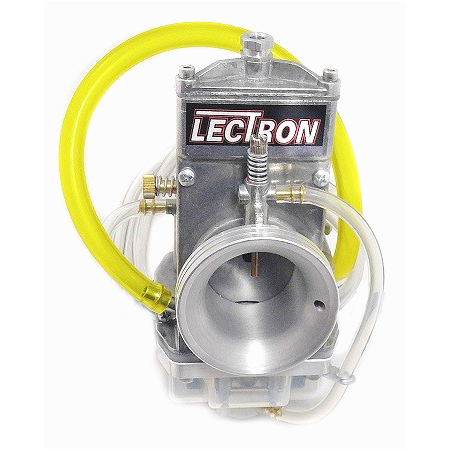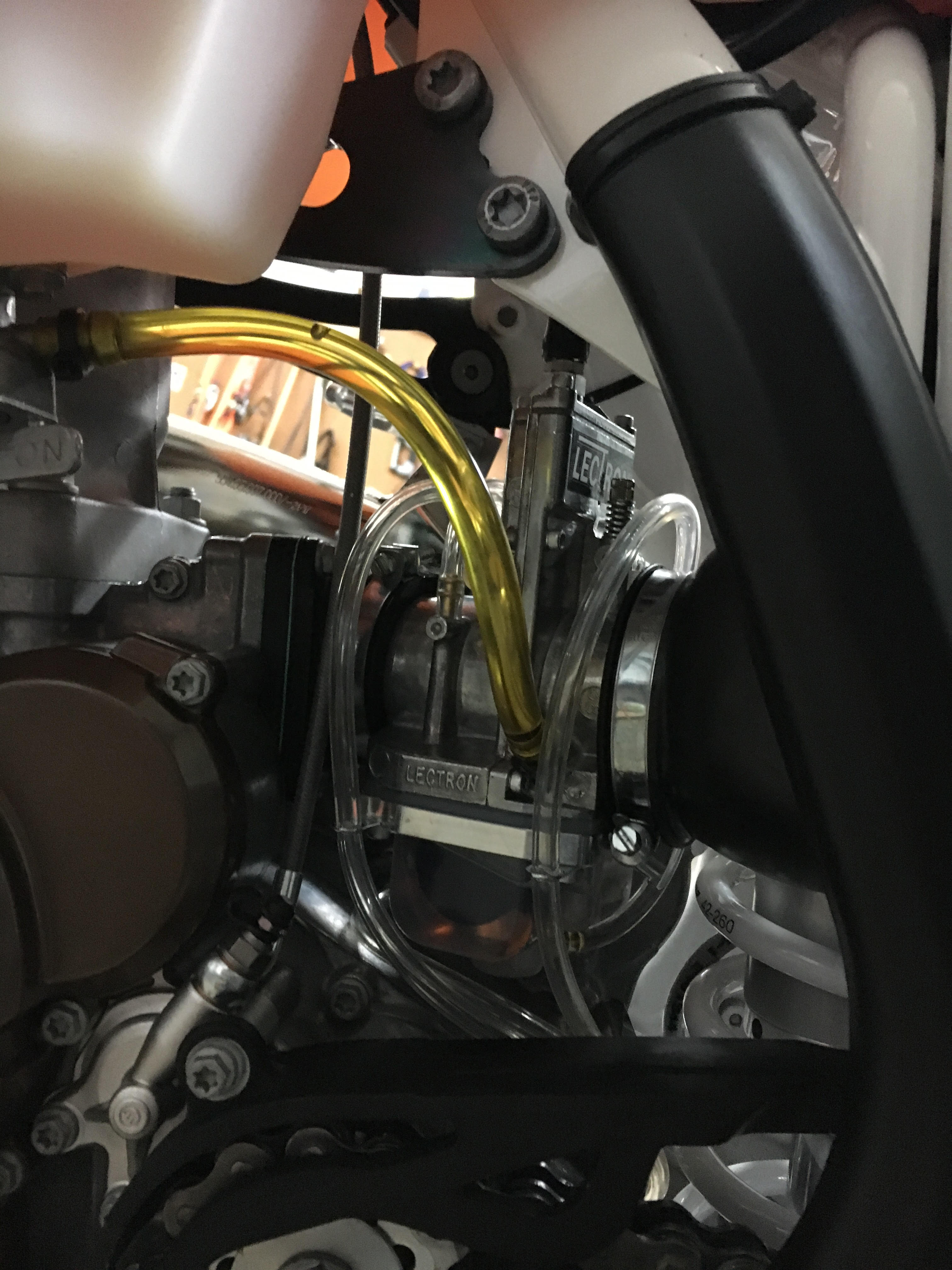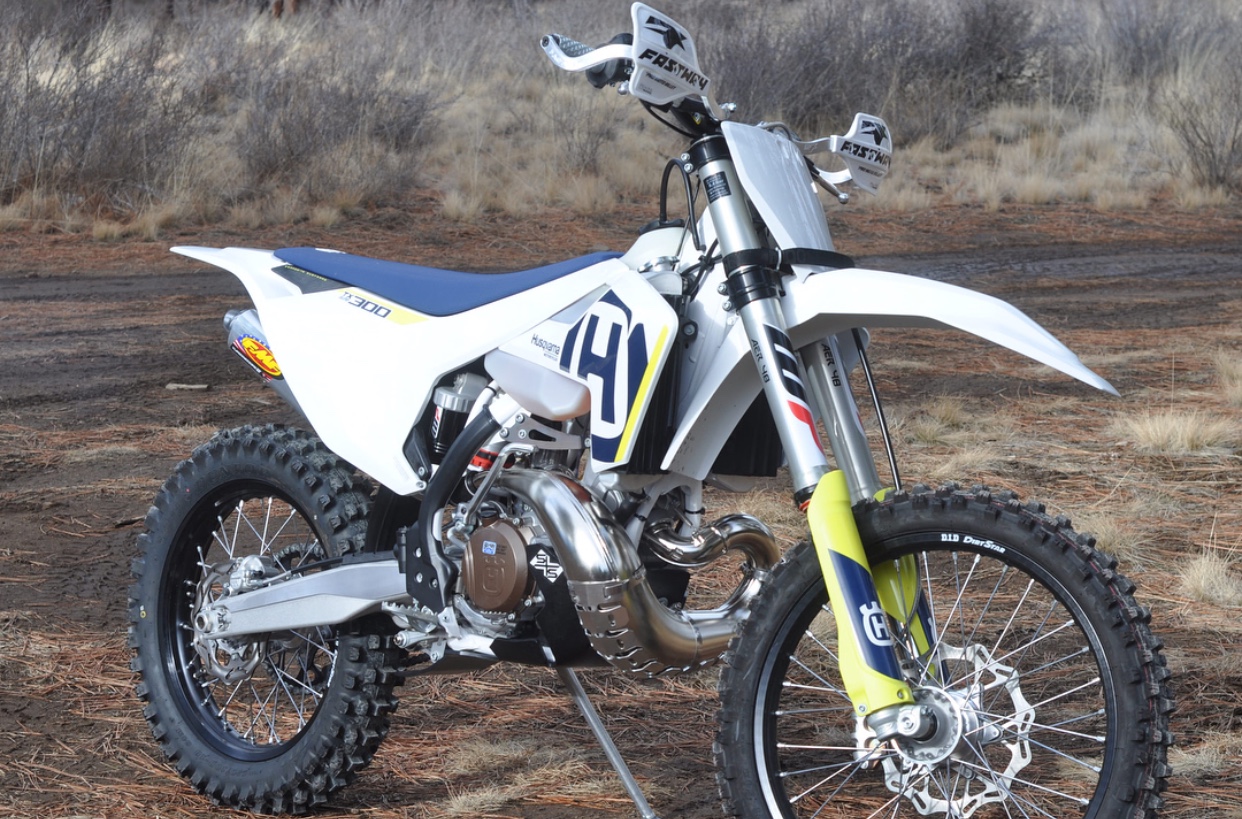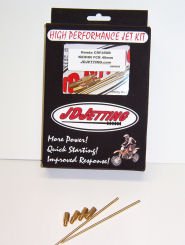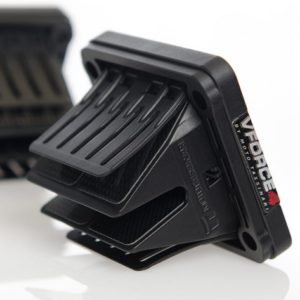Description
For Big Mountain riding on a 2-stroke the Lectron carb is a must. Why? Well first off better gas mileage…Our riders have reported up to 30%. For example a stock 2013 KTM 300 6 days now gets nearly 20 more miles out of a fillup! Why else?? Because when you start your ride at 3000′ and head up to nearly 13,000′ in just a few hours you cant be changing jetting 3 or 4 times throughout the ride. There is no jetting on a Lectron carburetor. They use a metering rod system instead allowing your bike to run beautifully and smooth and any elevation.
- No more jetting your bike for different elevations
- Much more efficient at monitoring fuel delivery = getter gas mileage
- Bike will run cleaner and crisper with better throttle delivery
Check out the Tech Info Tab above for more info
Tech Info
Lectron Technical Information
Total air flow through an engine determines it’s maximum BHP. So to increase engine output, either the airflow capacity must be increased or the fuel/air charge burned more effectively.
The primary obstacles to getting maximum airflow into an engine are the carburetor, intake manifold and port. We will deal here with the air/fuel charge and how the Lectron Carburetor can enhance this.
In an engine a rapid repeating sequence of controlled explosions in the combustion chamber creates the power. The carburetor must mix the air and fuel in the correct proportions to obtain an optimum air to fuel ratio. The carburetor creates this air/fuel ration by responding to the vacuum created inside the manifold of the engine.
The design of the Lectron® is focused on two primary principles:
- “AMPLIFY” the fuel pick up signal.
- “UTILIZE” the amplified fuel pick-up signal to create a more efficient burnable mixture.
The bore of the Lectron® carb is not straight, but incorporates a taper to increase the air velocity. Maximum air velocity is obtained at the point where the patented metering rod vaporizes the fuel with the passing air. The bore then increases to allow the vaporized air/fuel mixture to flow freely to the engine intake ports.
The Patented Metering Rod
The metering rod, which vaporizes the fuel, is located behind the air cut-off slide; therefore it is directly exposed to the manifold pressure of the engine. In most other carburetors the needle is in the center of a round slide or on the end of a flat slide, therefore keeping it out of the manifold pressure.
The increased air velocity in the venturi aids in creating a stronger fuel pick up signal at the fuel-metering rod. The air flow moves more rapidly past the needle in this taper bore design, more so than in a conventional straight bore carburetor.
The metering rod serves three important functions:
- 1. A fuel signal generating device.
- 2. A fuel delivery metering device.
- 3. An air volume density sensor.
Fuel Signal Generating Device
The shape of the metering needle in itself is a fuel signal-generating device. The flat side of the needle in a High Velocity Chamber, enhances the fuel pick up signal. The metering rod accomplishes this by creating divergence. This divergence is similar to the low-pressure area created by an air craft wing, which utilizes low pressure to create lift. The Lectron carburetor uses divergence to create “Fuel-Lift”.
Fuel Delivery Metering Device
The shape and contour of the ground surface of the metering rod controls how much fuel is allowed to be drawn up in response to the extremely strong fuel pick-up signal. The various numbers of the metering rod relate to the depth of the grind at various throttle positions. The depth of the grind determines the amount of fuel delivered.
The metering rod is one smooth continuous profile that eliminates “Flat Spots” often found on conventional carburetors with multiple overlapping fuel circuits. The metering rod does not contain transitions from idle to mid-range and wide-open power, but rather provides for a smooth consistent throttle response.
The fuel pick-up signal at the base of the metering rod is twice as strong as found on conventional carburetors. This extremely high fuel pick up signal relates to instantaneous acceleration, created by a fuel surge when the throttle is snapped open.
The shape of the metering rod compliments and enhances the fuel vaporization process by carrying the fuel signal and fuel vapors all the way up the length of the metering rod. In this manner fuel vapors are spread over the entire distance of the carburetor bore. The contoured side of the metering rod creates a fuel vacuum “wick” whereby the fuel vapors diverge from the metering rod starting at the base and continuing to the top of the rod. This allows a more efficient burnable mix to be created with all the air entering the intake manifold.
The contoured side of the metering rod creates an extremely low-pressure area at this point, which results in the fuel being broken down into a very fine vapor. Most other carburetors lack such a device to create this. These extremely fine vapors are easily dispersed up through the bore of the carb. The finer the vapor the more efficient the burnable mix. A more efficient burnable mix will result in more horsepower and better fuel economy.
Air Volume (Density) Sensor
The combined affect of the metering rod acting as a fuel signal generating device and a fuel delivery metering device allows the metering rod to also act as an air volume (density) sensor.
The ability of the metering rod to “sense” the air volume and density of the air flowing past it enables the metering rod to mix the proper amount of fuel with the air at a wider range of temperatures and elevations.
Both air temperature and elevation affect airflow volume by weight. As temperatures decrease air becomes more dense and heavier. The denser, heavier air will pick up more fuel when passing the metering rod due to the signal generated at the rod and the shape of the rod. Conversely, as elevation increases less dense or thinner, the lighter air will automatically pick up less fuel by weight while still maintaining the optimum air/fuel ratio.
THE SIMPLICITY
The beauty of the Lectron Fuel Management System is its ability to “read” the fuel requirements based on air flow volume (density) and temperature to automatically provide the proper fuel/air mixture.
Naturally there are limitations with any designed metering system. The Lectron carbs are able to operate in a much wider range of applications, temperature, and elevation due to their fuel vaporization efficiencies. Changes to operate beyond the wide range are simple and easy to make with a screwdriver and adjusting the metering rod. Changes do not require the removal of the float bowl. Depending on access to the carbs, the carbs do not have to be removed from the engine. All adjustments are made from the top side of the carb.
Thank you for taking the time to understand the Lectron carburetor.
Kevin Gilham
Lectron Fuel Systems
Lectron 2 Stroke Tuning Information
Idle Screw
Turning it to the left lowers your slide height and your idle. Turning it to the right raises the slide height and your idle. If you adjust your idle too far down and the screw locks up, reach inside your carb, raise your slide up, and turn your idle screw clockwise until it catches again. If you lean out your rod, you will have to turn your idle down, and if you richen your rod, you will have to turn your idle up. Wait until your bike is warmed up and clears out before adjusting your idle.
Metering Rod
The metering rod is used in combination with the vacuum from the motor pull fuel from the float bowl. The flat side must always be facing the motor to do this. Don’t adjust it without running it first. It comes preset from the factory, and tuning it on the stand will not accurately represent conditions when the motor is operating under load at the track or on the trail.
To tune the rod, remove the slide and hold the slide to where the rod is pointing towards you. Turning it to the right will richen it. Turning it to the left will lean it. What you are doing is either threading it in and shortening the length of it (.006” per ¼ turn), or threading it out and adding length to it. Then, push the rod in towards the slide to collapse the spring and turn it back to where it is facing the motor to save your setting. You can use a set of calipers to measure the length of the rod and get back to the starting point (on your invoice).
Power Jet
The power jet is used to fine tune your top end and works like a faucet. If you turn it to the left, it opens the valve and richens it. If you turn it to the right, it closes the valve and leans it out. Tuning this has nothing to do with your idle or low to mid-range throttle response. NEVER ride with a closed power jet. If you are riding dunes, deep sand, outdoor motocross, or snow where you are wide open for extended periods, we recommend going ¼ turn richer to keep your motor cool. The fuel level in the line will be even with the level in your float bowl until the power jet is activated.
Cracking the throttle open is not enough to activate the power jet. The motor must be pulling a sufficient vacuum with the slide height over the bottom of the jet nozzle for about a second. Trying to activate it on a stand will usually not work because it is not under enough load to pull enough of a vacuum before revving out.
Most two stroke dirt bikes running pump gas will come with the power jet open between 3/4 of a turn and 1 1/4 of a turn from bottomed out.

